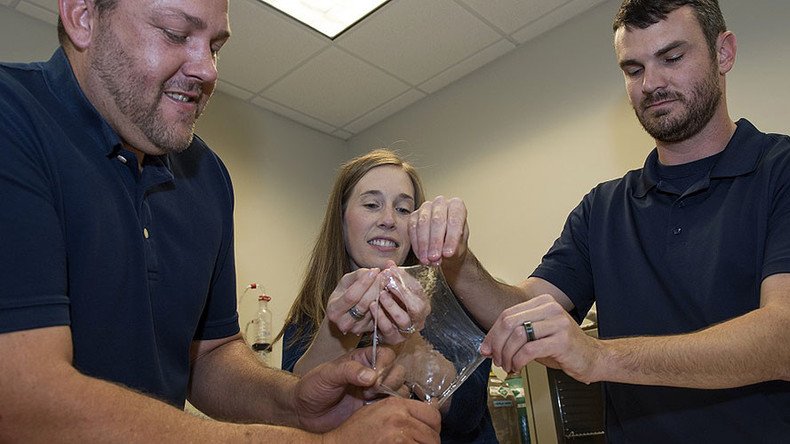Knight in slimy armor? US Navy scientists excited over new biomaterial

Could a substance derived from bottom-feeding prehistoric fish revolutionize battleship armor? US Navy scientists are betting on yes, pointing to the artificially re-created hagfish slime as the next frontier in maritime protection.
Working at the US Naval Surface Warfare Center in Panama City, Florida, biochemist Dr. Josh Kogot and materials engineer Dr. Ryan Kincer have developed a synthetic biomaterial by recreating the slime of the Pacific hagfish (Eptatretus stoutii) in a lab.
Love me some hagfish slime https://t.co/tiUy0NKC5C
— Lauren Simonitis (@OceanExplauren) January 27, 2017
“The synthetic hagfish slime may be used for ballistics protection, firefighting, anti-fouling, diver protection, or anti-shark spray,” Kogot told Naval Technology. “The possibilities are endless; our goal is to produce a substance that can act as a non-lethal and non-kinetic defense to protect the warfighter.”
Hagfish are bottom-dwelling sea creatures that lack jaws or spinal columns. When cornered, they release a slimy substance that expands quickly and has very high tensile strength, enabling the hagfish to deter or escape most predators. The material is often found fouling the nets of deep-sea fishermen, who have dubbed the hagfish “slime eels.”
Kogot and Kincer developed the new biomaterial from the thread and the mucin of the natural hagfish slime. They grew the proteins inside the E.coli bacteria, harvesting them later through purification procedures.
Finding Nemo monster is real: Rare black seadevil caught on video http://t.co/bBb29bn9ibpic.twitter.com/qLMWUcthg5
— RT America (@RT_America) November 24, 2014
“The coiled up thread behaves like a spring and quickly unravels upon contact with water due to stored energy,” Kincer explained. Interaction between the thread, mucin and seawater creates a three-dimensional, elastic lattice.
“Studies have shown the hagfish secretion can expand up to 10,000 times its initial volume,” the engineer said. “From a tactical standpoint, it would be interesting to have a material that can change the properties of the water at dilute concentrations in a matter of seconds.”
According to Kogot, the slime’s mechanical properties are comparable to Kevlar, the synthetic material used in body armor. Like spider silk, it is considered a renewable natural material with the potential to replace oil-based plastics.












